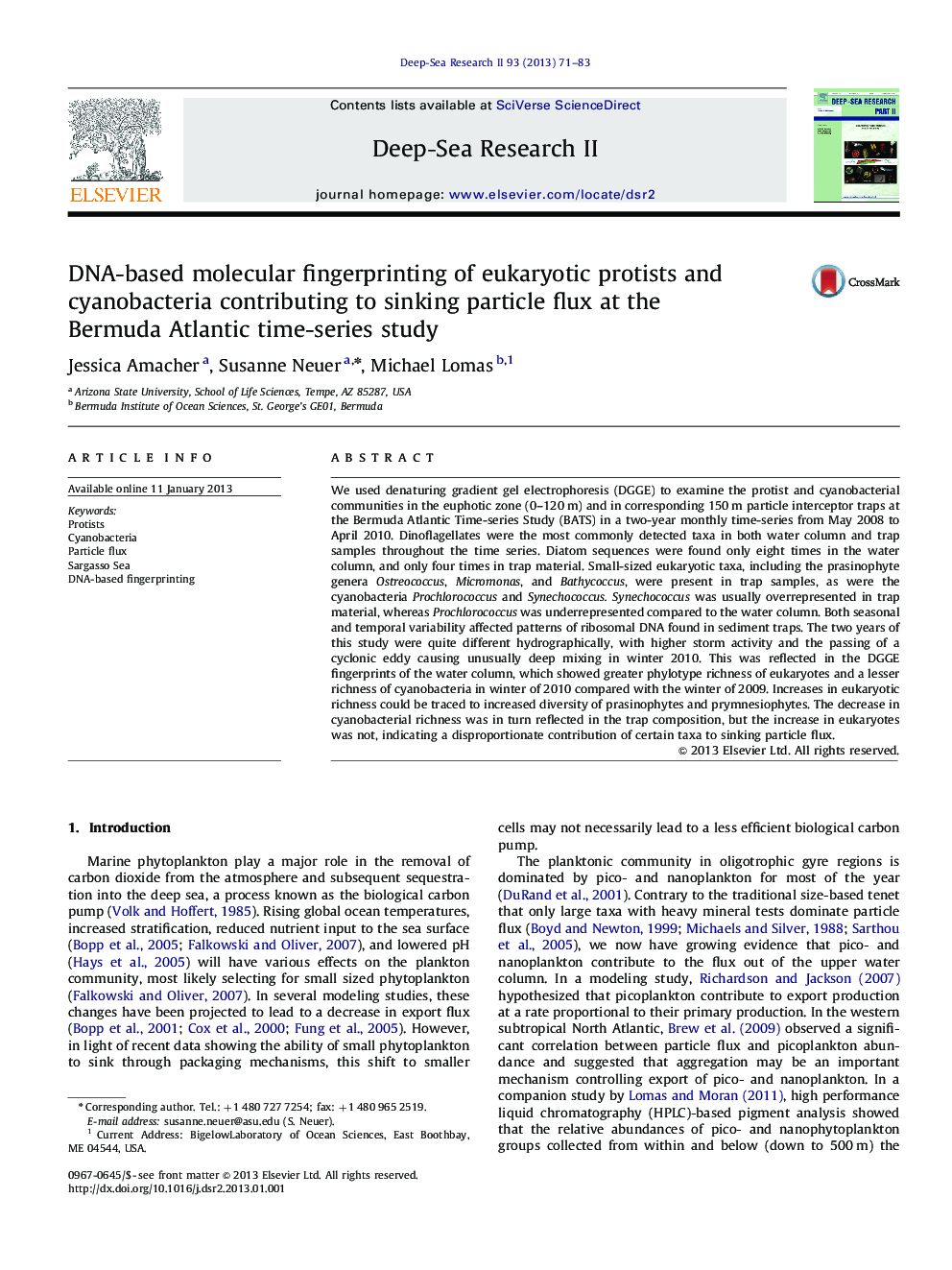| کد مقاله | کد نشریه | سال انتشار | مقاله انگلیسی | نسخه تمام متن |
|---|---|---|---|---|
| 4536530 | 1626446 | 2013 | 13 صفحه PDF | دانلود رایگان |

We used denaturing gradient gel electrophoresis (DGGE) to examine the protist and cyanobacterial communities in the euphotic zone (0–120 m) and in corresponding 150 m particle interceptor traps at the Bermuda Atlantic Time-series Study (BATS) in a two-year monthly time-series from May 2008 to April 2010. Dinoflagellates were the most commonly detected taxa in both water column and trap samples throughout the time series. Diatom sequences were found only eight times in the water column, and only four times in trap material. Small-sized eukaryotic taxa, including the prasinophyte genera Ostreococcus, Micromonas, and Bathycoccus, were present in trap samples, as were the cyanobacteria Prochlorococcus and Synechococcus. Synechococcus was usually overrepresented in trap material, whereas Prochlorococcus was underrepresented compared to the water column. Both seasonal and temporal variability affected patterns of ribosomal DNA found in sediment traps. The two years of this study were quite different hydrographically, with higher storm activity and the passing of a cyclonic eddy causing unusually deep mixing in winter 2010. This was reflected in the DGGE fingerprints of the water column, which showed greater phylotype richness of eukaryotes and a lesser richness of cyanobacteria in winter of 2010 compared with the winter of 2009. Increases in eukaryotic richness could be traced to increased diversity of prasinophytes and prymnesiophytes. The decrease in cyanobacterial richness was in turn reflected in the trap composition, but the increase in eukaryotes was not, indicating a disproportionate contribution of certain taxa to sinking particle flux.
Journal: Deep Sea Research Part II: Topical Studies in Oceanography - Volume 93, September 2013, Pages 71–83